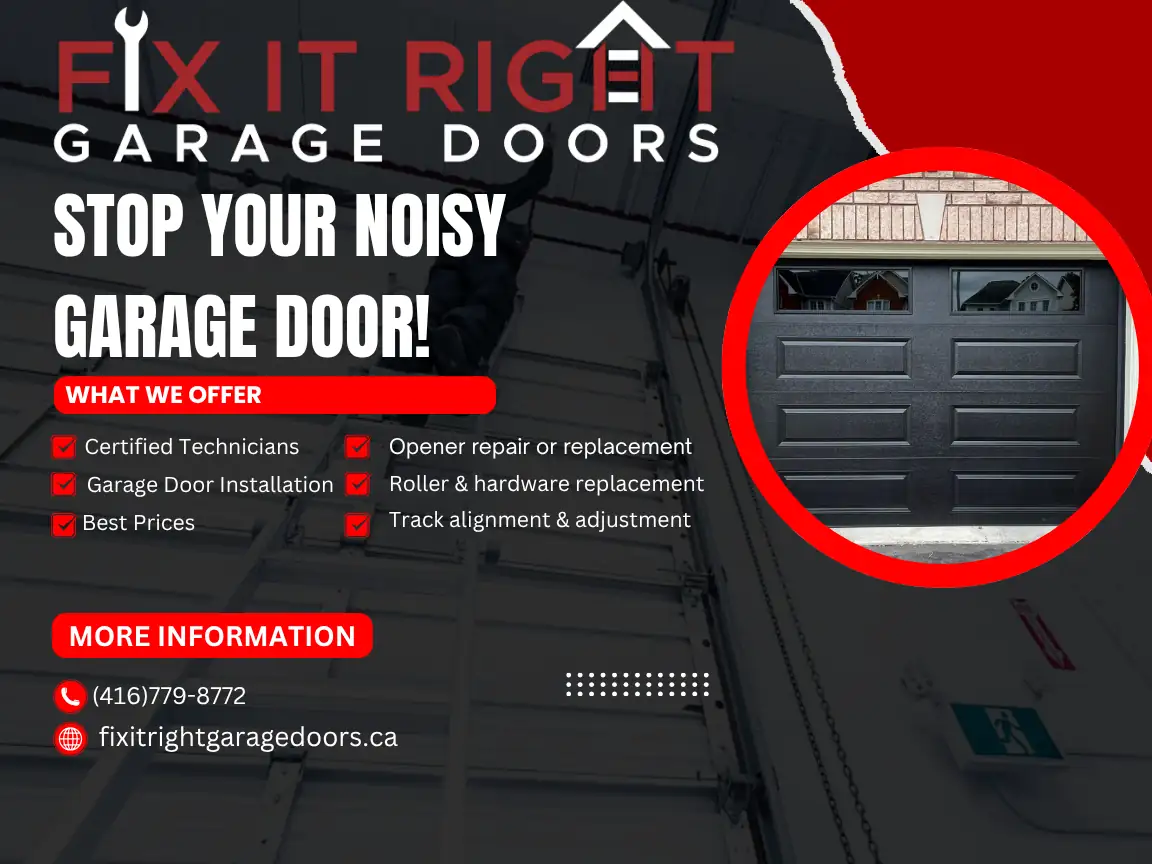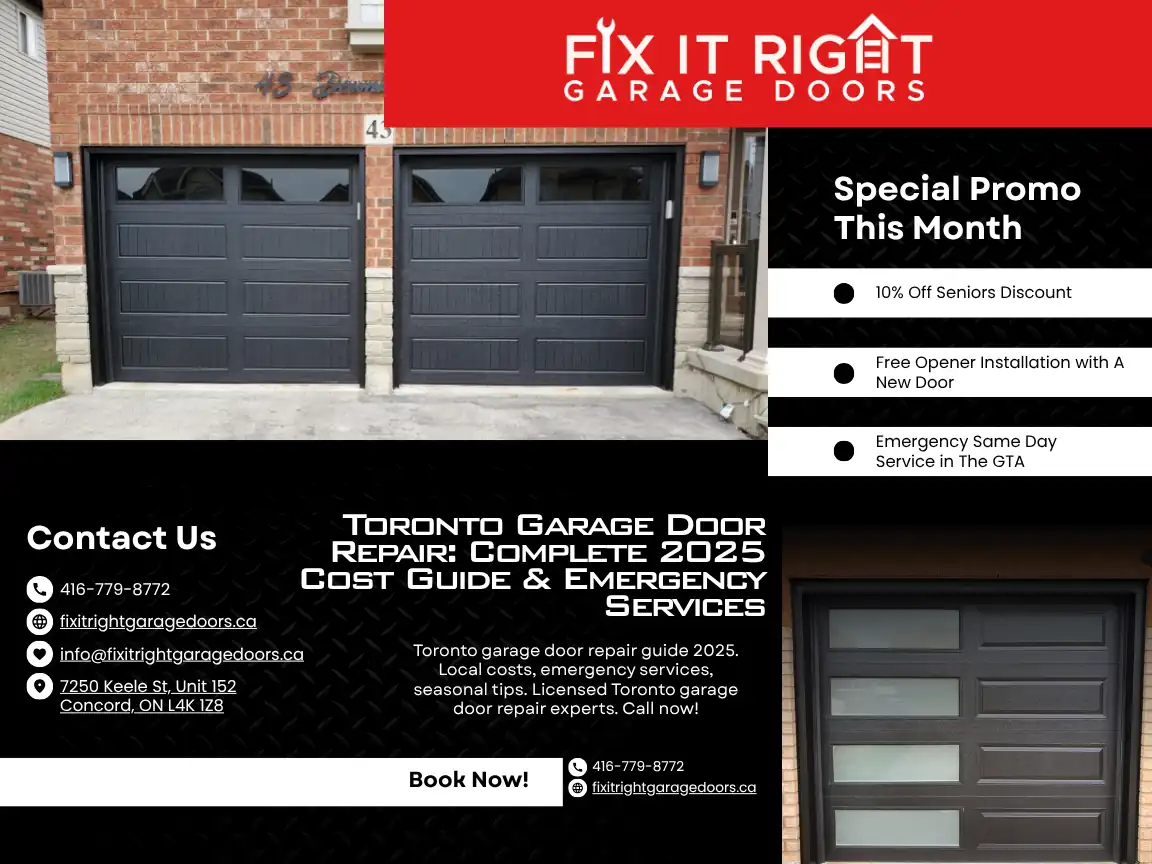A functional and visually appealing garage door can be a game-changer for any home. It not only secures vehicles and belongings but also adds style, convenience, and potential energy savings. When it comes to garage doors and installation, there’s a world of options awaiting homeowners—everything from choosing the right door material to arranging a professional setup that ensures smooth, reliable operation for years to come. Below, you’ll find a detailed look at the fundamentals of selecting, installing, and maintaining a modern garage door in 2025. Along the way, we’ll highlight useful tips, discuss costs, and explore ways to maximize energy efficiency, so you can make the best decisions without feeling overwhelmed.
Introduction to Modern Garage Doors and Installations
Homeowners today have more choices than ever when planning garage doors and installation. Technological advancements, improved construction techniques, and evolving design trends are redefining how we view and use our garages. Long gone are the days of a noisy, rattling door that offers scant insulation. Upgraded materials, sleek openers, and high-tech components make modern doors more secure, quieter, and even capable of integrating with smart home systems.
Before diving into specifics, it’s important to recognize that each house is unique. Factors like local climate, budget constraints, and personal style preferences should guide your decisions. Some people aim for affordable garage doors and installations that keep expenses low yet still provide robust protection, while others prioritize architectural flair or advanced features like smartphone connectivity. Whichever approach you take, clarity on basic door elements—such as materials, insulation, and opener type—goes a long way toward ensuring a satisfying outcome.


Key Components of a Garage Door
A typical garage door is more complex than it appears on the outside. Multiple components work in harmony to create a smooth opening and closing experience. Here’s a snapshot of what makes a garage door function:
- Panels or Sections: The visible parts of the door, which can be steel, wood, aluminum, or composite materials.
- Springs: Torsion or extension springs counterbalance the door’s weight, making it easy to lift by hand or via an automatic opener.
- Tracks: Metal rails that guide the door’s movement as it rises and lowers. Proper alignment is crucial for quiet, effortless operation.
- Rollers and Hinges: Allow door sections to bend and roll along the tracks, reducing friction.
- Opener (Motor Unit): Powers the door’s lift, featuring a chain-drive, belt-drive, screw-drive, or wall-mounted design.
- Weather Seals: Prevent drafts, pests, and moisture from entering through gaps around the door edges.
Each element impacts performance and longevity. For example, a poorly maintained spring can strain the opener, while bent tracks create grinding noises or obstruct the door entirely.
Materials and Their Impact On Garage Doors and Installations
The best garage door materials balance appearance, durability, and cost. Below is a table summarizing common choices:
| Material | Pros | Cons |
|---|---|---|
| Steel | Durable, secure, and often comes insulated | Can rust if the finish is damaged, may dent under strong impact |
| Wood | Classic, elegant look, good insulation potential | Requires regular sealing/painting, heavier and pricier |
| Aluminum | Lightweight, rust-resistant, great for wide openings | Dents more easily, fewer insulation options available |
| Fiberglass/Composite | Emulates wood aesthetics, low maintenance | Could crack in extreme cold, fewer design varieties |
| Vinyl | Resistant to dents, moisture-proof, minimal upkeep | Limited style choices may fade over time |
Choosing the best garage door materials often comes down to climate, style preference, and budget. For instance, if you live in a region with harsh winters and constant temperature swings, steel or fiberglass with good insulation might serve you better than untreated wood.
Focus on Energy Efficiency
Garage doors often constitute a large entry point into your home. Poorly insulated doors can allow drafts and disrupt the indoor climate of adjacent rooms, driving up utility costs. Opting for garage door energy efficiency measures—like layered steel panels filled with polyurethane foam, can keep your garage more temperate, protecting items stored inside and possibly reducing heating or cooling expenses.
Key Factors to Consider
- R-Value: Higher numbers indicate better thermal resistance. Doors typically range from R-6 up to R-20, depending on material and insulation type.
- Sealing: Bottom weather seals, side seals, and top seals keep debris and air out.
- Door Construction: Double or triple-layer doors create additional insulation pockets.
An Ontario homeowner who upgrades from a thin, uninsulated door to a well-insulated steel model often reports a more comfortable garage in both scorching summers and frigid winters. That’s especially important if the garage connects to your kitchen or living area—less heat exchange means saving on energy bills.
Choosing the Right Opener
An automatic opener is the centerpiece of Ontario garage door installation processes these days. With various types available, it’s essential to match the opener to your door size and personal preferences:
- Chain-Drive: Typically affordable, but can be noisy. Good for detached garages or if noise is not an issue.
- Belt-Drive: Quieter operation, ideal for attached garages or living spaces above. Usually costlier but worth it for noise reduction.
- Screw-Drive: Fewer moving parts, moderate noise levels, but can require seasonal lubrication.
- Wall-Mount (Jackshaft): High-end solution that frees ceiling space, especially for taller doors. Tends to be the priciest option.
Some advanced openers integrate with smartphone apps, allowing you to monitor door activity, receive alerts, or open the garage from anywhere. Others include battery backup—vital if your area experiences power outages. Deciding which features you need can help you find affordable garage doors without overshooting your budget.
Budget Considerations and Costs
Installing garage doors and installation can range from a few hundred to several thousand dollars, based on material, insulation level, and custom add-ons. Below is a rough guide to help plan your budget:
| Door Type | Approx. Door Cost (CAD) | Installation (CAD) | Total Range (CAD) |
|---|---|---|---|
| Non-Insulated Steel | $500–$800 | $150–$300 | $650–$1,100 |
| Insulated Steel/Aluminum | $800–$1,500 | $200–$400 | $1,000–$1,900 |
| Wooden Carriage-Style | $1,200–$2,000+ | $200–$500 | $1,400–$2,500+ |
| High-End Fiberglass/Composite | $1,000–$2,000+ | $200–$400 | $1,200–$2,400+ |
Note: These figures can shift if you need specialized openers, custom windows, or decorative hardware. Also, if your door frame or tracks need structural adjustments, anticipate an added labor fee.
Installation Essentials
A professional garage door setup typically follows these steps:
- Old Door Removal (if applicable): The installers safely detach the existing door, tracks, and hardware.
- Track and Hardware Prep: Tracks, rollers, and brackets are measured and fitted to accommodate the new door’s weight and dimensions.
- Door Assembly: Panels are attached section by section, ensuring each fits flush and lines up with the track system.
- Spring Configuration: Torsion springs are wound to the precise tension, while extension springs require even placement on both sides.
- Opener Setup: If you’re adding a new opener, the motor is mounted to the ceiling (or side wall), and sensors are aligned to ensure safe operation.
- Testing and Balancing: Installers run multiple open/close cycles, making micro-adjustments until everything moves smoothly.
While some handy individuals manage a DIY install, the process can be dangerous if you’re unfamiliar with high-tension springs. A professional team may ensure safety and compliance with local codes, which is especially helpful if you live in a region that mandates certain track or seal requirements.
Maintenance Tips for Long-Term Performance
No one wants to shell out for repeated repairs. By dedicating a little time to basic care, you’ll extend the life of your newly installed door and opener:
- Lubricate Rollers and Hinges: A silicone-based spray reduces friction and noise. Avoid thick greases that can harden in cold weather.
- Clean Tracks and Weather Stripping: Debris or dirt buildup can misalign the door or wear out the strip over time.
- Tighten Bolts: Vibrations from daily use can loosen hardware. A quick monthly inspection is wise.
- Test the Auto-Reverse: Place an object in the door’s path; the sensors should stop and reverse immediately to prevent accidents.
Consistent maintenance cuts down on future expenses and ensures garage doors and installation remain a solid investment, rather than a revolving door of repairs.
Avoiding Common Pitfalls
Whether you’re installing the door yourself or hiring a professional, small oversights can trigger big problems later. Consider these pitfalls:
- Incorrect Measurements: Ordering a door that’s slightly too tall or wide can create alignment nightmares and add labor fees.
- Ignoring Weather Seals: It’s easy to forget about bottom or side seals, but they’re crucial for temperature control and keeping out pests.
- Skimping on Insulation: If your garage is attached to the home, a non-insulated door may lead to energy losses, especially in colder climates.
- Underpowered Opener: Pairing a hefty, insulated door with a ½ HP chain-drive opener can wear down the motor quickly and produce unwelcome noise.
Being mindful of these hazards helps steer you clear of extra installation charges, repeated service calls, and potential safety issues.
Using Professional Services for the Best Results
While some individuals might prefer a hands-on approach, professional services can simplify everything from picking a door style that complements your house’s architecture to ensuring that the entire setup meets building codes. Experts know how to handle tricky tasks like balancing high-tension springs or customizing tracks for unusual garage layouts.
If you’d like experienced guidance in Ontario, be sure to check fixitrightgaragedoors.ca. Having a skilled crew manage your installation offers confidence that the door is secure, well-aligned, and tested for reliable performance. Many companies also include labor warranties or discounts on future tune-ups, stretching your dollar further in the long run.
Final Thoughts and a Look Ahead
Investing in garage doors and installation is about more than just a barrier or entry point. It’s about boosting your home’s curb appeal, keeping valuable possessions safe, and creating an efficient enclosure that doesn’t leak heat or let in drafts. With the wide variety of materials and designs on the market, plus the option to integrate advanced features like smartphone control or backup power systems, you can tailor a solution to your unique needs.
If you’re still exploring ideas, consider the local climate, your garage’s purpose (vehicle storage, workshop, or rec room), and your aesthetic goals. Balancing these factors ensures you wind up with a door that’s both functional and stylish—one that genuinely enhances your home experience. For additional insight, see HouseLogic’s Garage Door Buying Tips and compare door types, insulation levels, and pro installation advice.
What do you hope to achieve with your new garage door? More energy savings, a bolder exterior statement, or quieter performance for early-morning commutes? Mapping out your priorities before committing can help you choose the best fit. Remember, investing time and care into this process lays the foundation for a secure, visually appealing, and long-lasting addition to your home.










